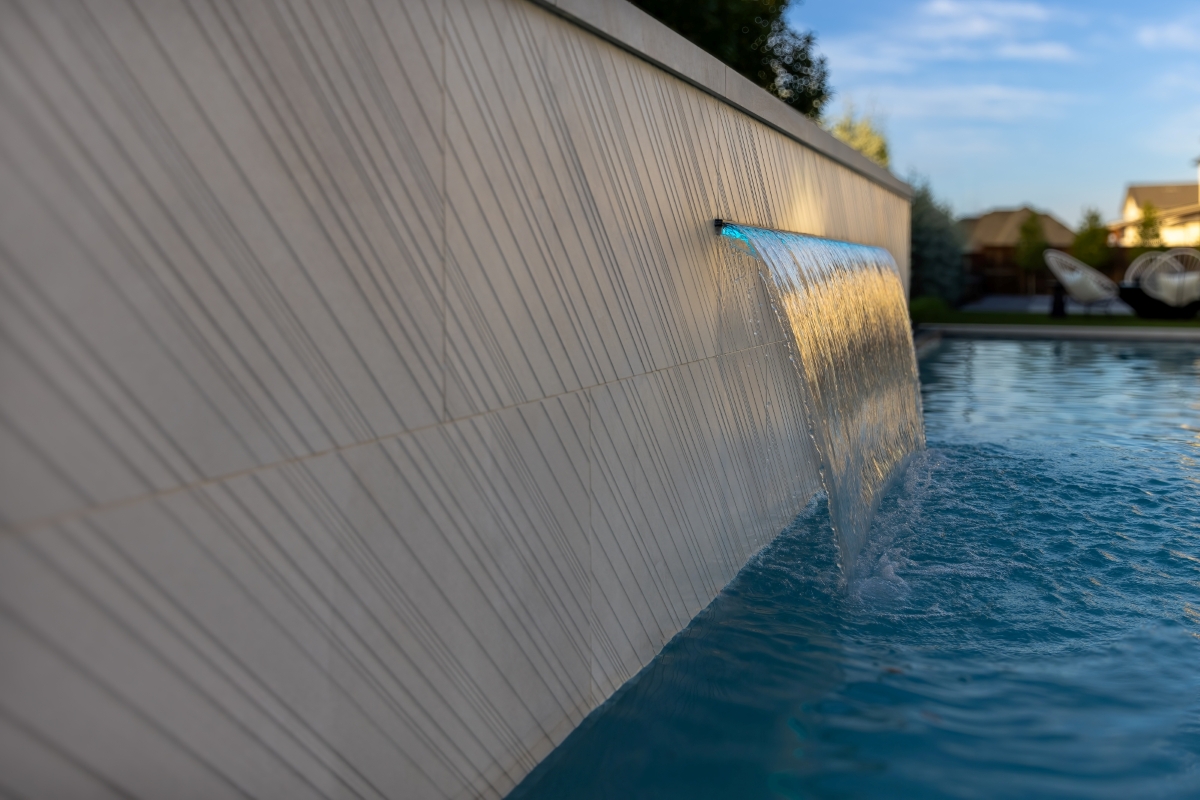Whether it’s a water wall, sheet fall or a particularly ornamental vanishing-edge back wall, waterfeatures only stand to enhance the environment – regardless of the architectural style.
Waterfeatures can add to the ambiance of any backyard, no matter the design style or desired vibe. But one of the keys to success is controlling certain factors that can cause problems if they become too excessive.
Here we look at managing three things that have the potential to ruin a great waterfeature –water migration, sound, and wind.
1. Safeguard against migration
Water likely will want to migrate from a waterfeature – even if it’s just one stray drop at a time.
If uncontrolled, uncontrolled water can cause erosion of the surface materials. If the water is not balanced correctly, the damage can be worse.
Left to its own devices, the water will migrate to adjacent surfaces. Take measures to control the water’s path and protect adjacent materials from permanent damage. Consider the materials you choose in and around the falling water, looking for products that can withstand chemically treated water, wet-dry cycles and mineral buildup, such as porcelain tile that the manufacturers deem suitable for pools and spas. Avoid porous or soft stones.
2. Control the sound
In listing the benefits of a waterfeature, some homeowners would rank sound even higher than the physical beauty.
This is another element that should be controlled. It’s very easy to become carried away, delivering rushing waters over the edge without realizing how the sound can echo in a smaller property and bounce off nearby walls.
Gauging the sound just by ear can prove difficult during the build – after all, a construction site will have much more ambient noise than the yard at night. To estimate the sound, some companies use decibel meters, keeping in mind that a whisper is about 30 decibels and common conversation measures in at approximately 60.
Builders can reduce a waterfeature’s sound by reducing impact of the spill. Materials such as screening, when placed in the catch basin for a waterfeature or vanishing-edge can help muffle the feature.
3. Consider the wind
Design to the wind conditions in the area.
If the backyard experiences stronger gusts, for instance, consider avoiding heavier falls and sheet falls, which can be broken up by wind. For vanishing edge walls in high wind conditions, consider slanting the top of the weir wall down toward the pool interior, rather than outward. This results in a gentler flow that will cling to the wall rather than fall in a sheet that can be whipped around in the wind.
Laminar jets may not be right for windy areas, either, as the smooth effect will be broken up by gusts.
If you anticipate a lot of splash-out from wind, be sure to design catch basins larger than normal.




